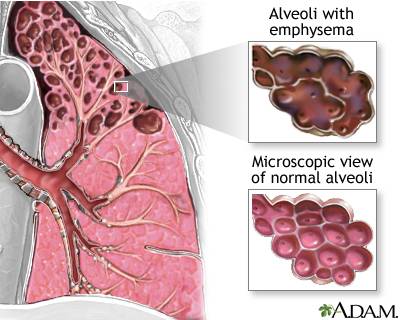Understanding Chronic Obstructive Pulmonary Disease (COPD)
**Introduction**
Chronic Obstructive Pulmonary Disease (COPD) is a progressive lung disease that affects millions of people worldwide. It is characterized by airflow obstruction and breathing-related difficulties, which typically worsen over time. COPD encompasses several conditions, including chronic bronchitis and emphysema, often coexisting in patients. Despite being largely preventable and treatable, COPD remains a significant global health burden.
**Understanding COPD**
1. **Causes and Risk Factors**:
- COPD is primarily caused by long-term exposure to irritants such as cigarette smoke, air pollution, chemical fumes, and dust.
- Other risk factors include genetic predisposition, respiratory infections during childhood, and occupational exposure to lung irritants.
2. **Pathophysiology**:
- The main pathological mechanisms involved in COPD include chronic inflammation, mucus hypersecretion, and destruction of lung tissue (emphysema).
- Inflammatory cells release enzymes that degrade the lung's structural integrity, leading to airflow limitation and irreversible damage.
3. **Symptoms**:
- Common symptoms of COPD include coughing, wheezing, shortness of breath, chest tightness, and frequent respiratory infections.
- Symptoms may vary in severity and can significantly impact daily activities and quality of life.
**Diagnosis and Evaluation**
1. **Clinical Assessment**:
- Diagnosis often begins with a detailed medical history and physical examination, focusing on respiratory symptoms and risk factors.
- Pulmonary function tests, such as spirometry, are crucial for assessing airflow limitation and severity of COPD.
2. **Imaging Studies**:
- Chest X-rays and CT scans may reveal signs of emphysema, lung hyperinflation, or other complications.
3. **Laboratory Tests**:
- Blood tests may be performed to evaluate oxygen levels, detect signs of infection, and assess overall health status.
**Management and Treatment**
1. **Smoking Cessation**:
- Quitting smoking is the single most effective intervention to slow the progression of COPD and improve lung function.
- Behavioral counseling, nicotine replacement therapy, and pharmacotherapy can aid in smoking cessation efforts.
2. **Medications**:
- Bronchodilators, including short-acting and long-acting beta-agonists and anticholinergics, are central to COPD management, providing symptomatic relief and improving airflow.
- Inhaled corticosteroids may be prescribed for patients with frequent exacerbations or severe COPD.
3. **Pulmonary Rehabilitation**:
- Comprehensive pulmonary rehabilitation programs incorporate exercise training, education, and psychosocial support to enhance functional capacity and quality of life in COPD patients.
4. **Oxygen Therapy**:
- Supplemental oxygen therapy is recommended for patients with severe hypoxemia to alleviate symptoms and improve survival.
5. **Surgical Interventions**:
- In selected cases, surgical options such as lung volume reduction surgery or lung transplantation may be considered to improve lung function and quality of life.
**Complications and Prognosis**
1. **Exacerbations**:
- COPD exacerbations, marked by acute worsening of symptoms, are associated with increased morbidity and mortality.
- Prompt recognition and management of exacerbations are essential to minimize their impact on disease progression.
2. **Comorbidities**:
- COPD is frequently accompanied by comorbid conditions such as cardiovascular disease, osteoporosis, depression, and lung cancer, which contribute to the overall burden of the disease.
3. **Prognosis**:
- The prognosis of COPD varies depending on disease severity, treatment adherence, and presence of comorbidities.
- While COPD is a progressive disease with no cure, early diagnosis and comprehensive management can help slow its progression and improve outcomes.
**Prevention and Public Health Strategies**
1. **Smoking Prevention and Cessation**:
- Public health efforts should focus on tobacco control policies, smoking cessation programs, and education campaigns to reduce the prevalence of smoking and prevent COPD.
2. **Environmental Protection**:
- Implementing measures to reduce exposure to indoor and outdoor air pollutants, occupational hazards, and biomass fuel combustion can help prevent COPD and respiratory illnesses.
3. **Vaccination**:
- Immunizations against influenza and pneumonia are recommended for COPD patients to reduce the risk of respiratory infections and exacerbations.
**Conclusion**
COPD is a complex and debilitating lung disease with significant public health implications. Despite its prevalence and impact, COPD is often underdiagnosed and undertreated. Comprehensive management strategies focusing on smoking cessation, pharmacotherapy, pulmonary rehabilitation, and supportive care are essential for improving outcomes and enhancing the quality of life for patients with COPD. Furthermore, concerted efforts in prevention, early detection, and public health initiatives are crucial for reducing the global burden of COPD and mitigating its impact on individuals and society.


